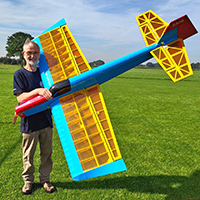The legendary P-38 “Lightning” revolutionized aviation history in World War II. Designed by a skilled team of engineers led by Clarence Johnson and Hal Hibbard, the P-38 was the only American fighter that was continually produced from before Pearl Harbor in 1941 to after the Japanese surrender in 1945. Over 9,900 P-38s were built, 3,810 of which were the superior P-38L variant. Revered by its foes as the “fork tailed devil”, the P-38 excelled as a fighter, interceptor, reconnaissance platform, long range escort, and as a ground attack aircraft. The P-38 Lightning was flown by the top four higher scoring American Aces in World War II. The aircraft also famously shot down Admiral Isoroku Yamamoto’s aircraft during “Operation Vengeance” on April 18, 1943.
From Wikipedia, the free encyclopedia
Lockheed P-38J Lightning - 1.jpg
P-38H of the AAF Tactical Center, Orlando Army Air Base, Florida, carrying two 1,000 lb bombs during capability tests in March 1944[1]
RoleHeavy fighter National originUnited States ManufacturerLockheed DesignerClarence "Kelly" Johnson First flight27 January 1939 IntroductionJuly 1941[2] Retired1965 Honduran Air Force[3] Primary usersUnited States Army Air Forces Free French Air Force Produced1941–45 Number built10,037[4]
The Lockheed P-38 Lightning was a World War II American piston-engined fighter aircraft. Developed to a United States Army Air Corps requirement, the P-38 had distinctive twin booms and a central nacellecontaining the cockpit and armament. Allied propaganda claimed it had been nicknamed the fork-tailed devil (German: 'der Gabelschwanz-Teufel') by the Luftwaffe and "two planes, one pilot" (2飛行機、1パイロット Ni hikōki, ippairotto?) by the Japanese.[7] The P-38 was used for interception, dive bombing, level bombing, ground attack, night fighting, photo reconnaissance, radar and visual pathfinding for bombers and evacuation missions[8] and extensively as a long-range escort fighter when equipped with drop tanks under its wings.
The P-38 was used most successfully in the Pacific Theater of Operations and the China-Burma-India Theater of Operations as the aircraft of America's top aces, Richard Bong (40 victories), Thomas McGuire (38 victories) and Charles H. MacDonald (36 victories). In the South West Pacific theater, the P-38 was the primary long-range fighter of United States Army Air Forces until the appearance of large numbers of P-51D Mustangs, toward the end of the war.[9][10]
The P-38 was unusually quiet for a fighter, the exhaust muffled by the turbo-superchargers. It was extremely forgiving and could be mishandled in many ways but the rate of roll in the early versions was too slow for it to excel as a dogfighter.[11] The P-38 was the only American fighter aircraft in production throughout American involvement in the war, from Pearl Harbor to Victory over Japan Day.[citation needed] At the end of the war, orders for 1,887 more were cancelled.[12]
